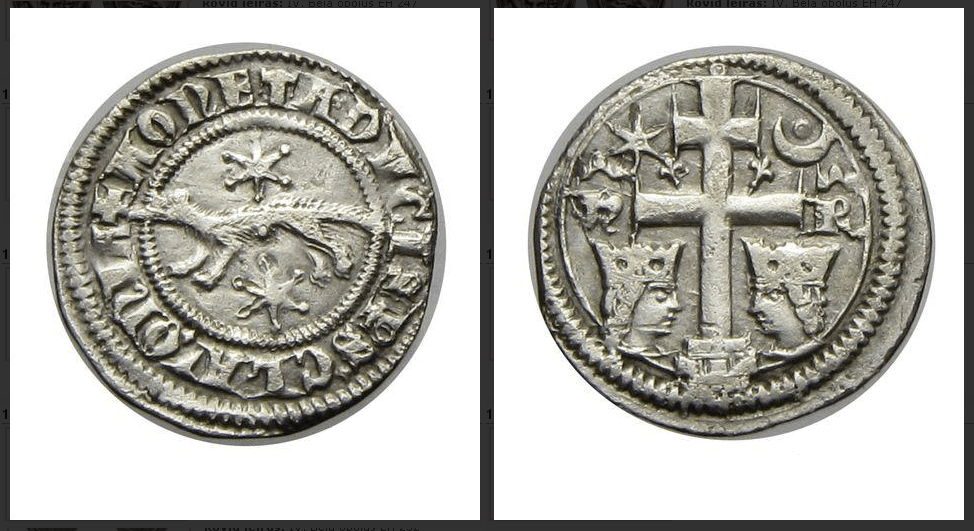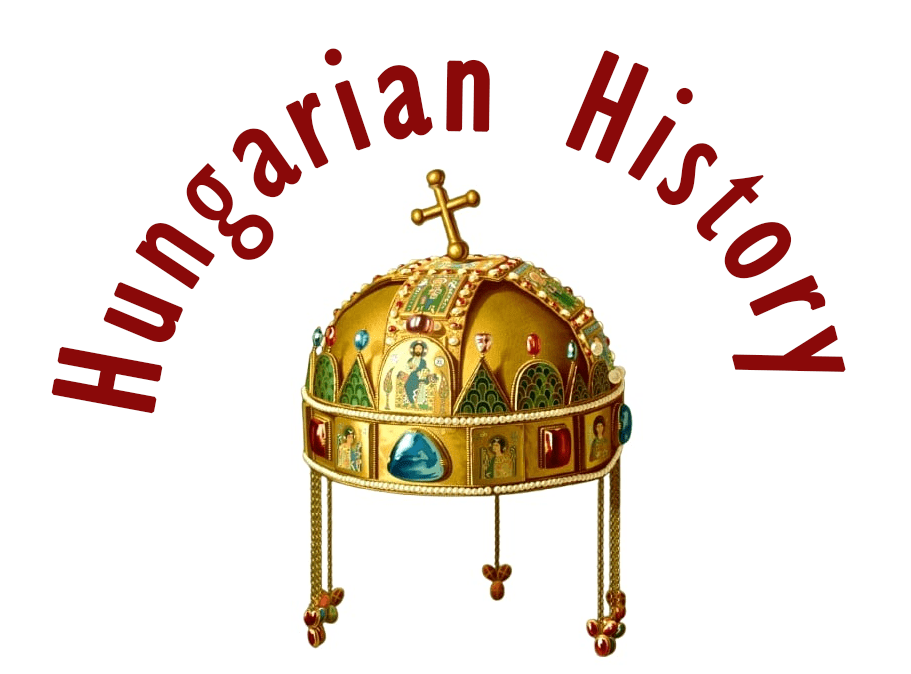King Béla IV is popularly known as the second founder of Hungary, and his merits include the oft-repeated phrase that he rebuilt the country after the Mongol destruction. As this question has been addressed by many, many things have been written about him. Here, let us attempt to briefly describe the basis, the process, and the results of the rebuilding of our legendary king.

Before the Mongol Invasion
Before the Mongol invasion, many people assumed that the country did not have stone castles. This erroneous assumption is immediately overturned when we realise that the Hungarians inherited certain fortresses from the former inhabitants of certain parts of the country. On the model of the Transdanubian fortresses, stone fortresses were built in the seats of the county centers in the time of St István, and in the time of King András II, father of King Béla IV, at the latest, these were supplemented by additional fortresses guarding royal treasuries – thus we can distinguish three types of stone fortresses before the Mongol invasion.

Together, there were about 50 fortresses in the country, mainly in Transylvania and the Transdanubian region, many of which were earth forts, especially in the east. However, the Mongols didn’t stop to besiege and take all the fortifications in their path. We do know, however, that some of the castles they tried to take survived their siege. These were Esztergom, (Székes)Fehérvár, Győr, Pannonhalma, Veszprém, Tihany, Sopron, Nógrád, and Léka (now Lockenhaus).

Reconstruction after the Mongol invasion
It is well known that the king changed his policy after the Mongol invasion, redistributed the previously reclaimed lands, granted large-scale privileges and donations, and gave urban status to some 20 settlements. Before the Mongol invasion, there were 5 towns, while by the time of the king’s death in 1270, there were 25 settlements with city walls, and he had built numerous castles. His royal efforts were unique and legendary, and earned him a worthy place in the three-hundred-year line of Árpád kings.

The background and consequences of the 1260 decree on the building of castles
Between 1242 and 1250, 16 castles were built, of which 5 were royal, 9 private, and 2 unknown. The initial momentum seems to have faded, and between 1250 and 126,0 only 5 new castles were built, of which only one was a royal and 4 a private construction.
If we observe, therefore, that rebuilding would be the most appropriate word for what King Béla IV undertook, especially if we look closely at the text of the king’s well-known decree of 1260:
“We have ordered that fortifications be erected throughout the whole territory under our crown, in suitable places, and that fortresses be built where the people may take refuge in case of danger. […] Any private person who, because of his location, possesses a place suitable for fortification, shall, by exchange or otherwise, be granted it to a community of men for fortification; and if such a place is in the possession of the royal power, it shall likewise be given to the use of private persons […] so that in this way […] places suitable for fortification may always be given to those who, by their care, may make the fortifications a refuge for many.”

After this provision, the remaining 10 years of the reign of King Béla IV, much of which was spent fighting his rebel son, King V. István, saw the construction of 29 more castles. Of these, 6 are associated with royal construction, 21 were built on private estates by private individuals, while the origins of 2 are unknown. By the time of his death, the country owed 12 castles to the royal court of Béla and 34 to the nobles, out of 40 castles built in 28 years.

Were the barons, during and after the reigns of King István V, and even more so of the half-Cuman king László IV and András III, right in thinking that they had the legitimacy to rule the country? After all, even the royal decree of 1260 stated that ‘places should always be given to those who, by their care, make the buildings a shelter for many.’ Although the numbers favour the personal pride of the later oligarchs, the castles built at the expense of the royal chamber are far more complex and powerful than those built by the nobility of the country.

The castles of Buda, Visegrád, Eger, and Esztergom were also built or reinforced during this period by Béla IV at his own royal expense, so that the later King Károly Róbert and King Lajos (Louis) the Great only needed to expand and develop them.

Typical Hungarian castles of the second third of the 13th century
In the 12th and 13th centuries, two types of castle were particularly characteristic of Hungary – the detached residential tower and the castle with an inner tower. The detached residential towers were mainly built by private builders, while the castles with inner towers were mainly built by the royal court due to their much higher costs.
The detached residential tower, often mistakenly confused with the old tower of a larger fortress, is the most basic fortification, primarily for passive defence. It consists of a single tower with a fairly large floor area, which also serves as the residence of the owner or keeper of the castle, together with the castle staff and servants. Its sides were 15-20 m long, and its base was rectangular or circular, or in a few cases, other polygons. Inside, there are four or more rows of storeys, mostly with flat ceilings.

The basement contained the water collection cistern, the ground floor was used for storage, the first floor for the external staircase entrance and guards’ rooms, and the upper floors for the apartments extended with walled enclosures. The internal connection was formed by stairs. The residential tower was the most characteristic type of castle in Hungary in the 12th and 14th centuries, but its appearance parallels that of the inner-towered castles – the choice was thus primarily based on wealth considerations.

The buildings of the inner tower castle included living quarters, storerooms, and stables, which were walled to protect the ever-expanding castle population. The walls surrounding the castle courtyard were either built without towers or reinforced with watchtowers, and the entrance was often protected by not one but two gate towers and various traps, drawbridges, and wolf pits. This type of castle was the first to allow active defence, thanks to its much larger floor space and the possibility of using the courtyard. For this very reason, the residential tower was often left detached from the wall, so that it could be defended even after the rest of the castle had been taken.

This was often complemented by the old tower, which was not primarily intended to be used for residence but to protect the castle, and also served as guard accommodation, and was much simpler to build than the separate residential towers. Due to the topography of the terrain, castles were often not built in a regular rectangular plan, and the most important aspect was to allow for a divided defence, so that the garrison could be constantly pushed back against the stronger enemy and did not have to abandon the whole castle at once.

The “old” Litva castle was built in the second half of the 13th century by the Bozóki clan of the Hont-Pázmány family. Reconstruction drawing of the castle in its supposed state at the end of the 13th century.
Above, we tried to summarise the circumstances and factors of the second foundation of the country by King Béla IV. According to this, the king had built only a third as many castles as his nobles, but their quality and fighting power far exceeded that of his nobles. Although the court’s efforts were instrumental in rebuilding the country and strengthening its military, they also paved the way for the autocratic rule of aristocratic pride.

This is not to argue that it was wrong to give Bela IV the permanent title of ‘second founder of the nation’, but rather that, looking back, it is impossible for us to view events from one perspective without examining the implications.
Source: https://lovagok.hu/ Debreczeni Arany-Keresztes Lovagok Egyesülete

Dear Readers, I can only make this content available through small donations or by selling my books or T-shirts.
Please, support me with a coffee here: https://www.buymeacoffee.com/duhoxoxa
You can check out my books on Amazon or Draft2Digital. They are available in hardcover, paperback, or ebook:
https://www.amazon.com/dp/198020490X or at https://books2read.com/b/boYd81

My work can also be followed and supported on Patreon: Become a Patron!http://Become a Patron!
Become a Patron! Donations can be sent by PayPal, too: https://tinyurl.com/yknsvbk7


https://hungarianottomanwars.myspreadshop.com/all
Subscribe to my newsletter here: https://tinyurl.com/4jdjbfkn

